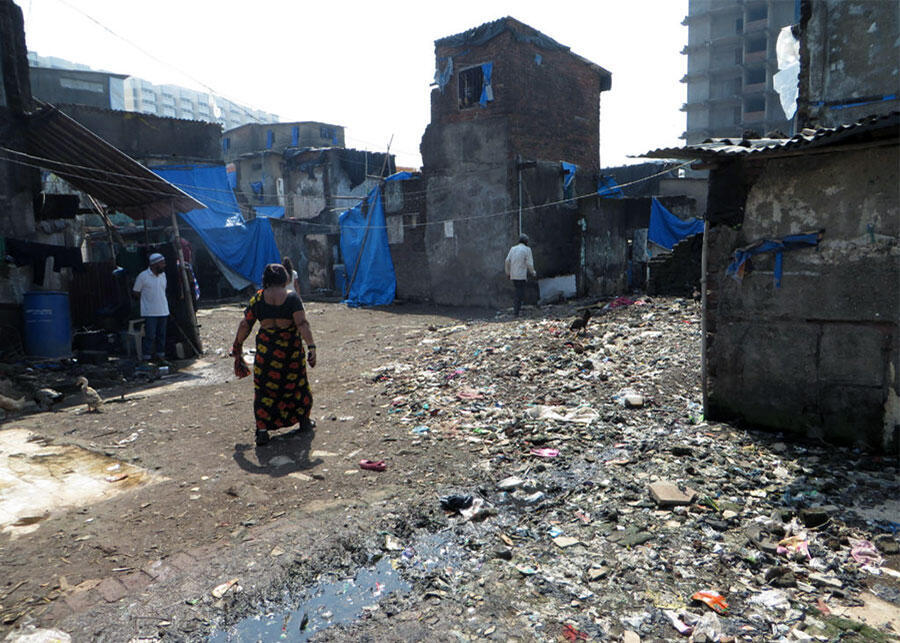
Nine years ago this slum community, which has existed since the 1960s, was approached by a developer promising new homes in 18 months for no cost to residents who could prove they had lived in their hut since 1995. The community agreed to the developer’s deal, and residents were moved to four transit camp buildings on the property while their huts were demolished and new high-rise residential towers were constructed. The timeline for the project elongated to five years, then to the current ten years. The four new towers built by the developer on the site of the former slum remain unoccupied, with a tall construction fence sealing off the site. The community says that the developer says they will be relocated to the new units in one year.
Residents believe the developer is stalling because the land value and value or market units in the development keeps increasing, and the community has less hope of claiming rights to amenities they were promised as time goes on. Residents expressed doubt they would ever move into the new towers. They regret taking the developer’s deal and feel they were better off living in the slum than in the transit camp. Residents feel they were not given enough time by the developer to adequately review the contract documents with a lawyer, so there were many loopholes for the developer to exploit.
The terms of the new development do not allocate space for certain amenities the community deems essential, such as an outdoor space for the community to practice their religion.
Several huts in the demolished and yet-to-be-redeveloped area of the slum neighborhood still stand amongst cleared areas. These belong to people who could not prove they had lived in the slum since 1995 and therefore were excluded from claiming transit camp housing and a unit in the new development. Proof of residence includes election card, ration card, electricity bill, etc.
On one of the photos above, blue and white high-rises remain empty while residents of the slum community which once inhabited the land on which they stand enter their ninth year living in temporary transit camp buildings. Residents say the relocation was originally supposed to take eighteen months. Several huts belonging to families who could not claim units in the new towers remain standing in the demolished slum. Ditches filled with standing or slow-draining blackwater and build-up of garbage patches in the demolished slum near the transit camp. In the central space between the transit camp buildings, ground floor units have added value as potential commercial spaces. Thus, inside one of the ground floor units, a unit has been subdivided to allow for a shop space facing the building exterior. One of the shop owners, for example, did not live in the demolished slum but did operate a shop in it, so was granted a ground-floor commercial space in the transit camp building by the developer. Among other business, photos depict a butcher’s shop and a catering business. Meanwhile, wastewater and garbage collect in a small alley between the transit camp buildings. The developer sends someone to clean the alley once per week, but residents say it is never enough to make a dent.
Photos: Kate Cahill










